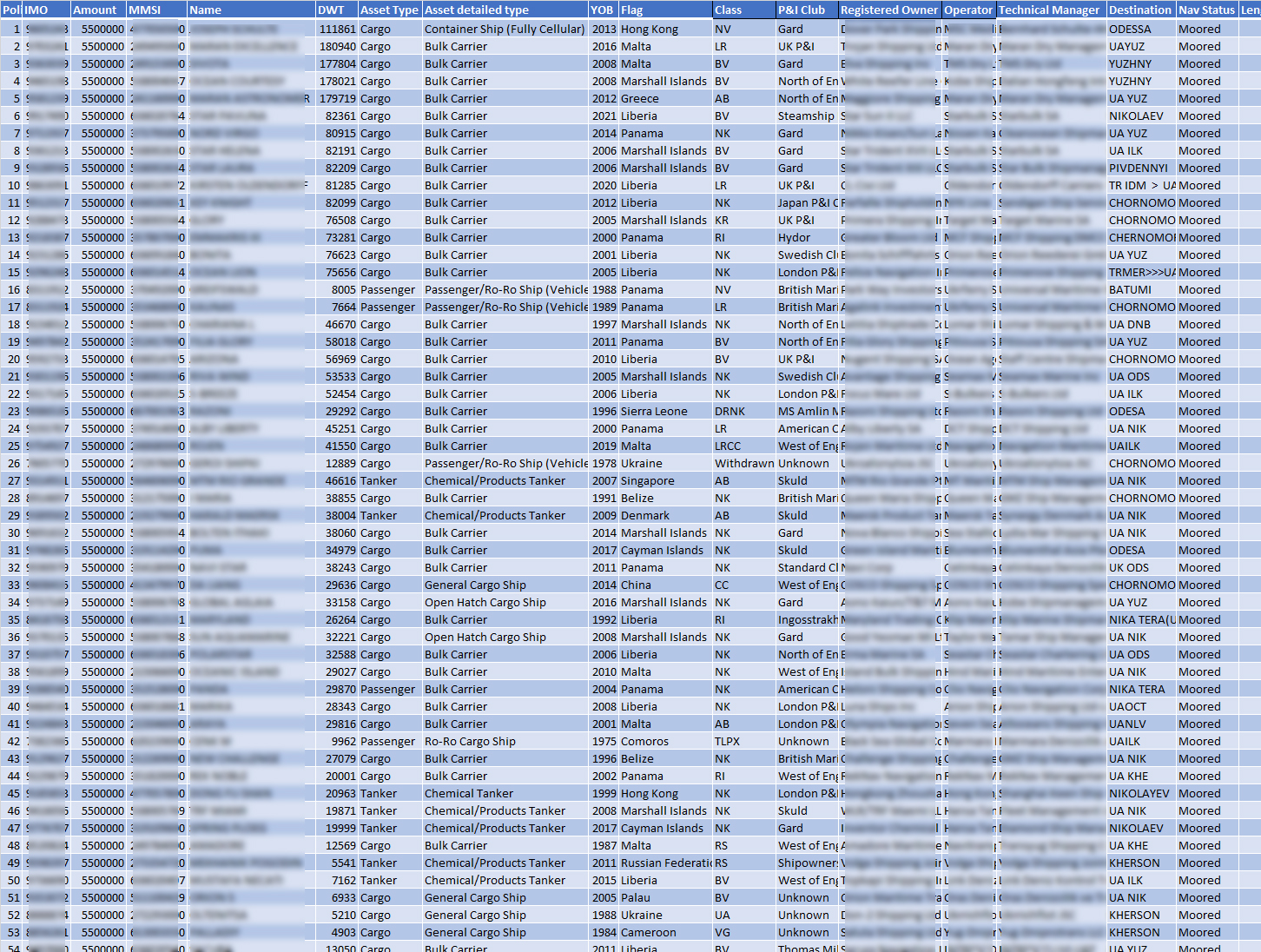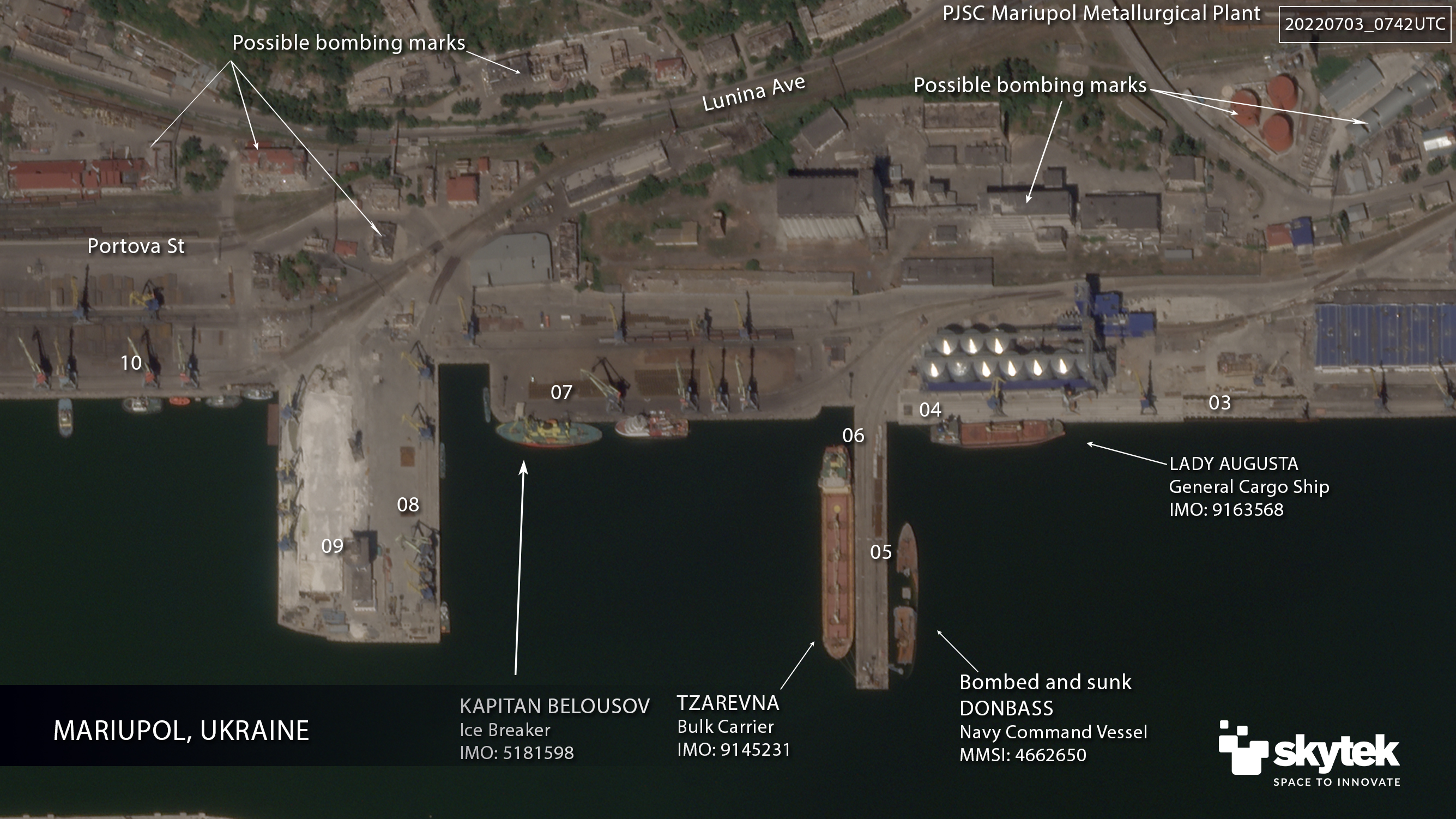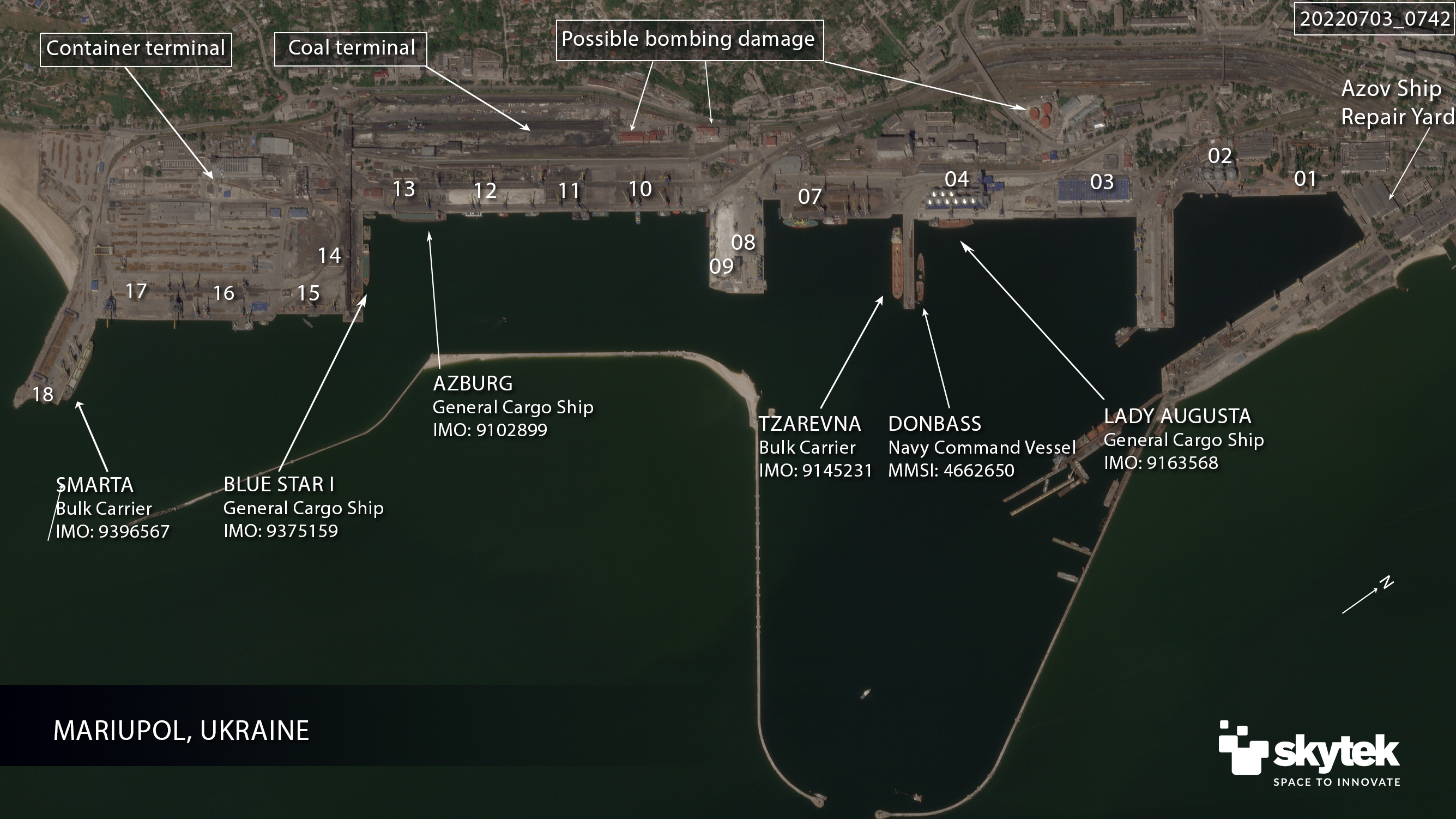Summary:
On February 24th, 2022 Russia initiated a military invasion of Ukraine, resulting in the suspension of shipping operations in the Ukraine ports of the Black Sea and the Sea of Azov until further notice.
Skytek is able to monitor the marine hull trapped in the closed ports of Ukraine, city and port properties. Using high-resolution imagery satellite imagery and other space assets, we can generate bespoke reports for assets of interest, indicating and quantifying any potential claim associated with the conflict.
JWLA-030, HIGH RISK AREA THE BLACK SEA AND THE SEA OF AZOV
The waters of the Sea of Azov and part of the Black Sea have been designated High Risk Area (HRA), on February 15th through JWLA-028, now updated to JWLA-030 of April 04th, 2022. According to the Skytek REACT system, there are more than 80 merchant ships trapped in the Ukrainian ports, while the vessels in the outer anchorages were able to depart in the first days of the conflict.
Owners and managers are making efforts to relieve the crews from these vessels, some having now reduced crew on board, and several ships entering cold lay-up with no crew onboard.
Skytek is monitoring the condition of the vessels and lists in Figure 1, and upon request, can provide comprehensive reports on the vessels in the ports and their current condition.
Most of the ships trapped on February 24th in the latest defined High Risk Area (HRA) could not depart and are still moored in the Ukrainian ports inside the Sea of Azov or the Black Sea.
Using very high-resolution satellite imagery, Skytek tracks the condition of the ships and the port equipment (jetties, cranes, warehouses, silos), being able to mark the damages associated with the repeated bombing in the port of Mariupol.
In Figure 3 (detail) and Figure 4 (overview), rotated for better alignment, Skytek captures the ships moored in the port. It is noted that since February 24th some of the vessels have shifted the jetty (for example, Azburg and Tzarevna have shifted from jetties 17 and 10 to jetties 13 and 06 respectively), but did not depart from the port.
On February 24th, there were 6 merchant ships moored inside the port of Mariupol. On June 21st, Skytek records the first vessel, previously moored at jetty 10, being allowed to depart the port of Mariupol towards Novorossiysk. It is expected that vessel Tzarevna is the next in line to be allowed to depart.

PORT OF MARIUPOL, UKRAINE
Most of the ships trapped on February 24th in the latest defined High Risk Area (HRA) could not depart and are still moored in the Ukrainian ports inside the Sea of Azov or the Black Sea.
Using very high-resolution satellite imagery, Skytek tracks the condition of the ships and the port equipment (jetties, cranes, warehouses, silos), being able to mark the damages associated with the repeated bombing in the port of Mariupol.
In Figure 3 (detail) and Figure 5 (overview), rotated for better alignment, Skytek captures the ships moored in the port. It is noted that since February 24th some of the vessels have shifted the jetty (for example, Azburg and Tzarevna have shifted from jetties 17 and 10 to jetties 13 and 06 respectively), but did not depart from the port.
On February 24th, there were 6 merchant ships moored inside the port of Mariupol. On June 21st, Skytek records the first vessel, previously moored at jetty 10, being allowed to depart the port of Mariupol towards Novorossiysk. It is expected that vessel Tzarevna is the next in line to be allowed to depart.
On April 07th, 2022, Skytek captures the Ukrainian navy command ship Donbass, which foundered and sunk in the shallow waters near the jetty after being hit by a missile.
In Figure 4 below Skytek marks several other bombing marks in the port, to warehouses, oil storage tanks, silos and port infrastructure.








